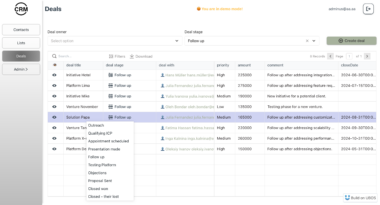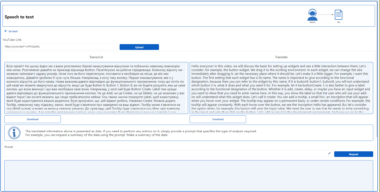MySQL Navigator MCP
A powerful MySQL/MariaDB database navigation tool using MCP (Model Control Protocol) for easy database querying and management.
Features
- Connect to MySQL/MariaDB databases
- Switch between different databases dynamically
- Execute SQL queries with type safety
- Retrieve database schema information
- Pydantic model validation for query parameters
- Secure credential management
- Comprehensive logging system
- Connection pooling and retry mechanisms
- SSL/TLS support for secure connections
Log File Location (Cross-Platform)
By default, all logs are written to:
- Windows:
C:Users<YourUsername>.mcpmcp-db.log - macOS/Linux:
/home/<yourusername>/.mcp/mcp-db.logor/Users/<yourusername>/.mcp/mcp-db.log
If the .mcp folder does not exist in your home directory, the application will automatically create it. If you run into any issues, you can manually create the folder:
Windows:
mkdir $env:USERPROFILE.mcp
macOS/Linux:
mkdir -p ~/.mcp
Installation
From PyPI (recommended for most users):
pip install mcp-db-navigator
From source (for development):
git clone <your-repo-url>
cd mcp-db
pip install -e .
- Create a
.envfile with your database credentials:
DB_HOST=your_host
DB_PORT=your_port
DB_NAME=your_database_name
DB_USER=your_username
DB_PASSWORD=your_password
DB_SSL_CA=/path/to/ssl/ca.pem # Optional: for SSL/TLS connections
DB_MAX_RETRIES=3 # Optional: number of connection retries
DB_RETRY_DELAY=1.0 # Optional: delay between retries in seconds
Usage Examples
1. Command Line
Run the MCP server directly from your terminal:
mcp-db --config /path/to/your/project/.env
2. In Cursor
To use this MCP server in Cursor:
- Open Cursor settings and add a new MCP server.
- Use the following configuration (example):
{
"mcpServers": {
"mysql-navigator": {
"command": "mcp-db",
"args": [
"--config",
"/absolute/path/to/your/.env"
]
}
}
}
- Make sure the path to your
.envfile is absolute.
3. In Claude Desktop
If Claude Desktop supports MCP servers:
- Add a new MCP server and point it to the
mcp-dbcommand with the--configargument as above. - Refer to Claude Desktop’s documentation for details on adding custom MCP servers.
Query Parameters
The query dictionary supports the following parameters:
table_name(required): Name of the table to queryselect_fields(optional): List of fields to select (defaults to [“*”])where_conditions(optional): Dictionary of field-value pairs for WHERE clauseorder_by(optional): List of fields to order byorder_direction(optional): Sort direction “ASC” or “DESC” (default: “ASC”)limit(optional): Number of records to returnoffset(optional): Number of records to skipgroup_by(optional): List of fields to group byhaving(optional): Dictionary of field-value pairs for HAVING clausejoin_table(optional): Name of the table to join withjoin_type(optional): Type of JOIN operation (default: “INNER”)join_conditions(optional): Dictionary of join conditions
Security Features
- Database credentials are managed through a config file
- Passwords are stored as SecretStr in Pydantic models
- Input validation for all query parameters
- SQL injection prevention through parameterized queries
- SSL/TLS support for encrypted connections
- Connection string sanitization
- Rate limiting for queries
- Query parameter sanitization
Production Features
Error Handling
- Comprehensive error handling for database operations
- Connection timeout handling
- Automatic retry mechanism for failed connections
- Input validation for all parameters
Performance
- Connection pooling for optimal resource usage
- Query execution time logging
- Connection pool statistics
- Performance metrics collection
Monitoring
- Structured logging with different log levels
- Query execution tracking
- Connection state monitoring
- Error rate tracking
Contributing
- Fork the repository
- Create your feature branch (
git checkout -b feature/amazing-feature) - Commit your changes (
git commit -m 'Add some amazing feature') - Push to the branch (
git push origin feature/amazing-feature) - Open a Pull Request
License
This project is licensed under the MIT License - see the LICENSE file for details.
MySQL Navigator
Project Details
- Medsaad/mcp-db-navigator
- MIT License
- Last Updated: 5/7/2025
Recomended MCP Servers

a test
LegalContext is an open-source Model Context Protocol (MCP) server that creates a secure, standardized bridge between law firms'...
This read-only MCP Server allows you to connect to Azure Analysis Services data from Claude Desktop through CData...
It's like v0 but in your Cursor/WindSurf/Cline. 21st dev Magic MCP server for working with your frontend like...
A Model Context Protocol server that brings macOS system tools directly inside your LLM client. Monitor system performance...
LSD Model Context Protocol


MCP Server to interact with flutterwave
Model Context Protocol server for OpenStreetMap data

A Model Context Protocol server that executes commands in the current iTerm session - useful for REPL and...
 From vibe coding to vibe deployment. UBOS MCP turns ideas into infra with one message.
From vibe coding to vibe deployment. UBOS MCP turns ideas into infra with one message.






